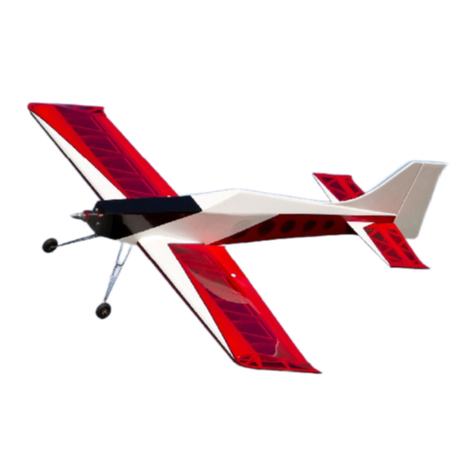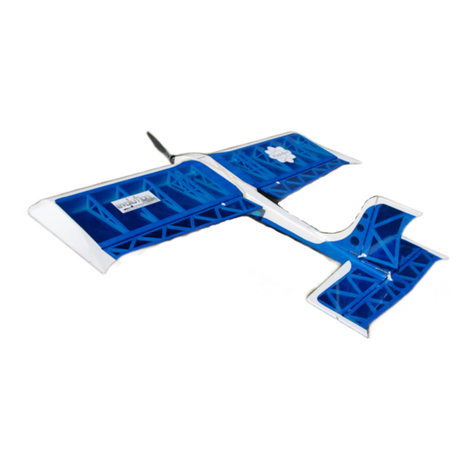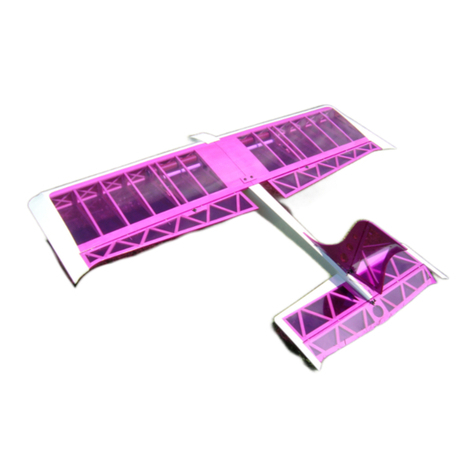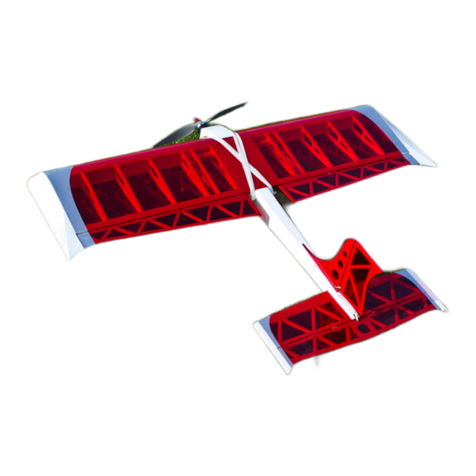
2
Evolutions Equaliser E2K has been designed to comply with the UK Pylon Racing rules. Originally designed for
club competition the equaliser provided a single class racer making it equal(iser) for all who entered. The racing
was fast and close, even using a 3s battery, which made the competitions fun and not too fast so it was open to
all.
The model is of simple construction to make the competition accessible to all and it is easy to fly and aimed at
the intermediate to advanced pilot. The Equaliser on full throttle is fast and cuts through the air with a satisfying
whistle, but throttle back and it will slow down and become as gentle to fly as a glider. The speed range is
astonishing!
The laser cut parts simply slot together to provide a lightweight structure without compromising strength. The
Equaliser E2K is simple and satisfying to build for both the amateur and experienced builder.
Building Recommendations
Check all parts from the box to ensure that they are present; if not then please contact us at the e-mail address
at the back of the instructions. We do from time to time make mistakes!!
Ensure that you use a completely flat base on which to build the model, this should be large enough the build
the wing 39” (1000mm) x 16” (400mm) as a minimum.
Carefully remove the parts from the laser cut sheet by cutting the tabs, do not snap out. Retain some of the
scrap material to use during the build.
Read through the instructions before starting to build, understand each step before applying glue.
The glue detailed in the instructions is for a guide only, this is what we used for the prototypes, it is at the builder
discretion which glue is used, but ensure that it is suitable for the intended purpose. Always read the
application instructions to ensure you achieve a strong joint. Always read the safety instructions supplied with
your chosen glue.
Take your time building the model, build a straight and strong model, this will ensure the model will fly well!
Enjoy. Building is part of aero modelling!
This radio-controlled model is not a toy. It can cause serious injury to the operator, public and property if
misused or abused. Ensure that you read all the instructions supplied with this kit and instructions provided with
the engine and radio control system or any other components purchased separately carefully. Also, make sure
that any parts bought separately are suitable for their application.
Always sand balsa and ply using a suitable face fit mask, and where possible outside away from others.
The kit contains small and potentially sharp parts, keep away from children.
Additional Materials Required
Standard Thin or Medium Cyano
Cyano Activator
Aliphatic Wood Glue
Epoxy Resin
Loctite
Covering Material
Radio Gear
Motor
ESC
Modelling Knife
Razor Plane
Set Square
Sand Paper
Sanding Block
Drill
Drill Bits
Building Board – Completely flat 1000 x 400mm Min
Bradawl
The rules for the design of this model have been taken from the UK pylon racing website
(http://www.ukpylonracing.co.uk/). Should you wish to enter the National E2K Championships then ensure your
model complies with the rules and any subsequent changes.































